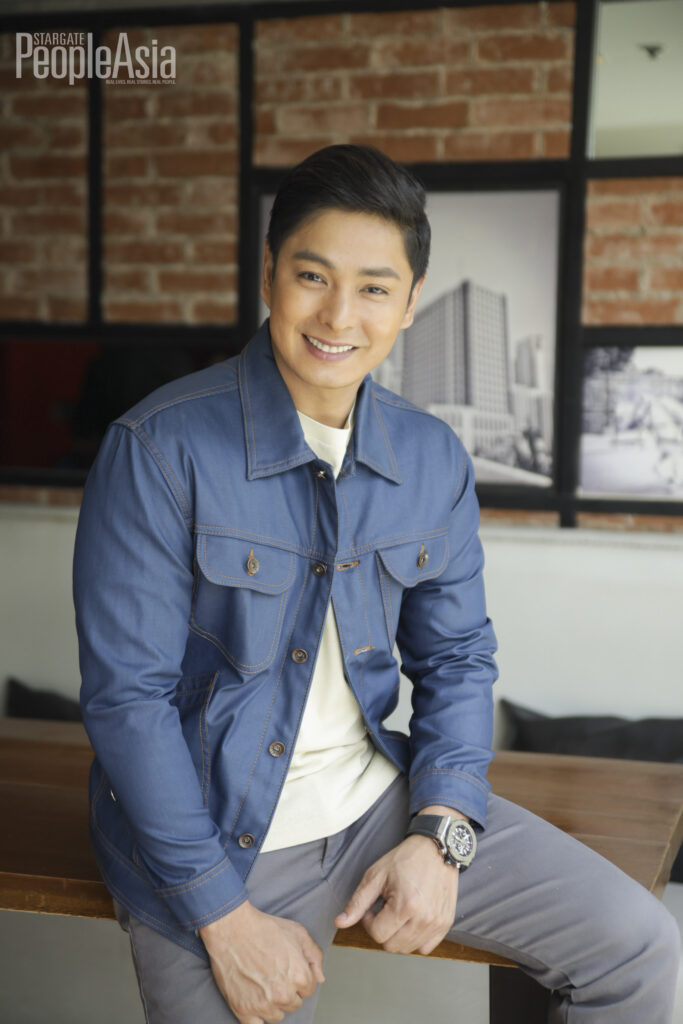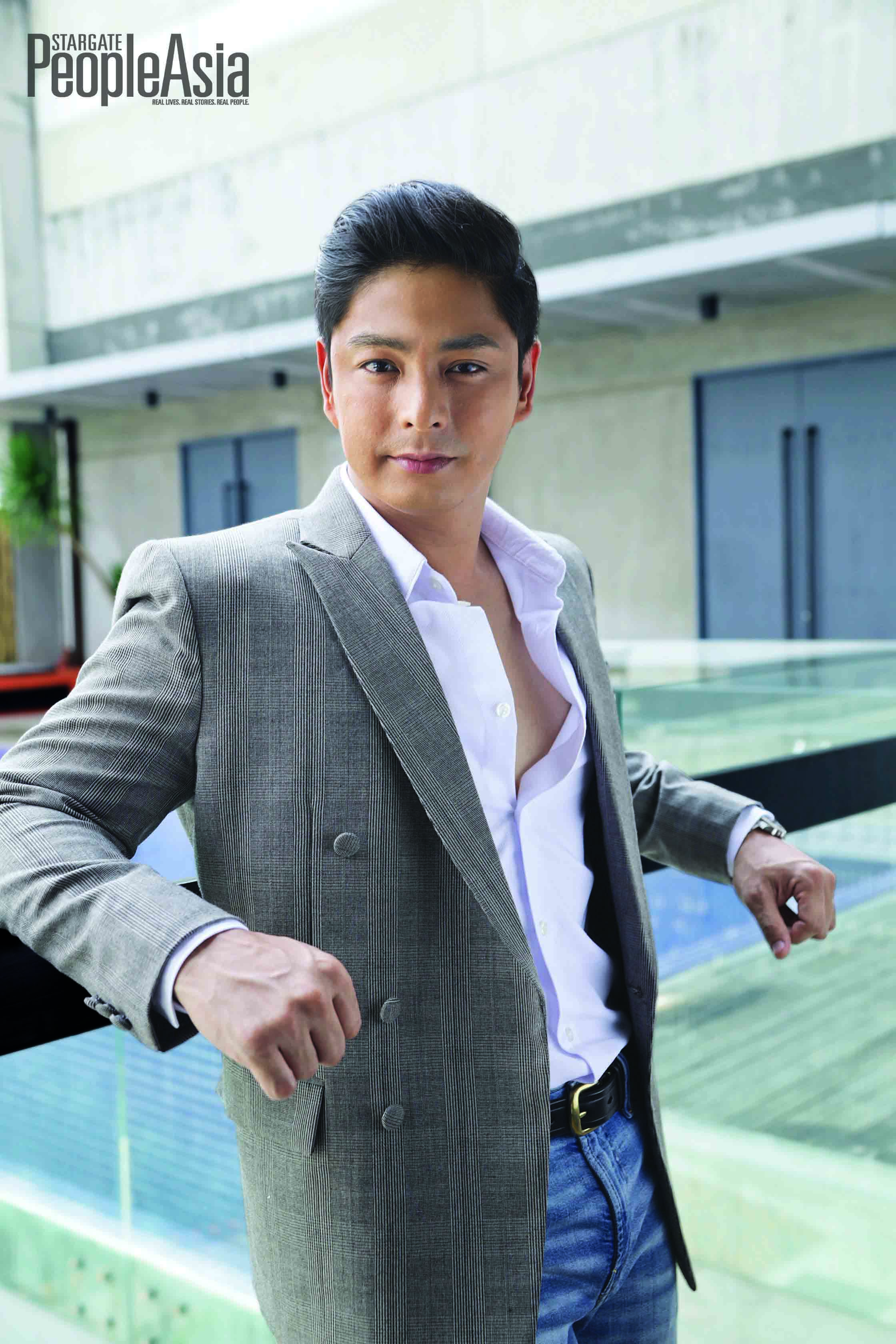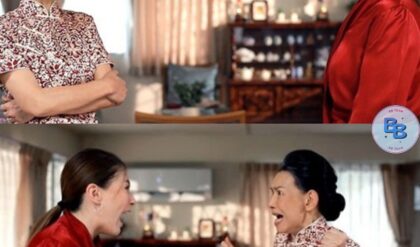
Apart from being a consistent top-rater during its seven-year run, FPJ’s Ang Probinsyano holds the record as the country’s longest-running primetime TV series, leaving behind an unprecedented 1,696 episodes. What is behind the actor-director’s immense popularity and endearing appeal among the masses? He lets us in on the secret.
With his recent move to draw inspiration from Batang Quiapo, another Fernando Poe Jr. starrer, for his latest teleserye (TV series), Coco Martin has now virtually sealed his fate as FPJ’s heir apparent. But is the country’s hottest superstar on the verge of outgunning and outpunching, so to speak, his late idol in terms of popularity and mass appeal? Well, the jury is still out.
One thing is sure though. Even FPJ, aka “Da King,” had he lived and continued to make movies today, would find it harder to guard his privacy — something Coco also values — while maintaining that priceless superstar mystique, no thanks to social media and the ubiquitous smartphone. Coco, who does most of his stunts, should know.
There was one instance during the taping of a particularly dangerous scene early on in FPJ’s Ang Probinsyano, the precursor to FPJ’s Batang Quiapo, when the action star felt the need to set aside his pride and derring-do, and let a professional stuntman stand in for him.
The said scene required his character, SPO3 Ricardo “Cardo” Dalisay, to jump from a footbridge along EDSA and land on a moving truck below. But Coco had a split-second change of heart when he realized a present-day reality that stars like him have to contend with: countless uzis (bystanders), their phone cameras trained on him from afar, were watching and recording his every move.
Rather than disappoint his fans by allowing a stunt double to take over, Coco decided to do the unthinkable: He made the jump himself and landed on cue just as a flatbed truck was passing by. “I just took a deep breath and told myself, bahala na (come what may),” the now 41-year-old actor tells us in the vernacular.
“We don’t have the kind of budget they have abroad where they can close off entire sections of a city while filming,” Coco, who, along with several co-directors, now also directs and line produces his TV shows, adds. Earlier, when we remind him that we need to interview him after the photo shoot accompanying this story, he instantly flashes his trademark grin and says with self-deprecating humor, “Okay, basta walang Ingles, Ingles.” (Okay, as long as it’s not in English.)
Without allowing the production’s quality to suffer, local production outfits, he continues, make do with what they can control, which usually includes a street or two where chase and fight scenes are filmed, and have no power to shoo away bystanders with smartphones and instant access to social media.
 Trucker jacket by INO CALUZA OF VIKTOR
Trucker jacket by INO CALUZA OF VIKTOR
Being with Julia
For years, Coco, amidst incessant talk both on mainstream and social media, had also neither confirmed nor denied the status of his relationship with actress Julia Montes until recently. Away from the klieg lights, he describes himself as a very serious and private person who considers his home in Fairview his kingdom, a quiet place that’s far removed from the glitzy world of showbiz.
“I hardly splurge on shoes and fancy clothes. Hindi mo ’ko mapapabili nang basta-basta,” (You can’t make me spend just like that.) he says, after we kid him that with his earnings, the former brand ambassador of Wade, an erstwhile hip but obscure fast-fashion brand of bags and shoes, can now easily afford to buy pairs upon pairs of Gucci and Louis Vuitton. “I prefer spending [my money] on my house, on properties,” he adds.
His home, which sits on a 2,000-square meter lot, is off limits to media. Coco, who tapped sisters Ivy and Cynthia Almario to do its interiors, envision it as a city home-slash-tropical paradise, a sanctuary of sorts he looks forward going home to every day after long hours of taping and brainstorming on and off set.
But who is Coco Martin behind closed doors?
Rodel Nacianceno in real life, Coco is the product of a broken home and was raised primarily by his paternal grandmother Matilde. Although smiling comes easy for him, he describes himself as “marubdubin na tao” (an intense person) because of the various challenges and hardships he has been through early in life, which include doing odd jobs — from handing out promotional flyers in malls to waiting on tables, even working as a gasoline boy and tricycle driver just to help bring food to the table and finish his Hotel and Restaurant Management course.
At one point, during his early twenties, Coco even flew and worked in Canada for less than a year as a janitor and personal aide. Since he lacked the necessary papers to make his stay there legal, he had to go back home to Manila. But even before leaving for Canada, he was already auditioning for bit parts in both TV commercials and indie films.
When director Brillante Mendoza, who later became one of Coco’s mentors, learned that he was back in town, he lost no time casting him in several of his indie projects, including his now-classic and award-winning masterpieces Serbis and Masahista.
By some twist of fate, Coco eventually obtained a Canadian work visa just as movie offers were starting to come his way. By then, he was no longer interested to leave the country, deciding to stay put instead even though the pay back then to virtual unknowns like him was a pittance. In the wake of his success in indie films, he initially became identified as a bold actor.
With the help of longtime manager Biboy Arboleda, Coco was able to slowly rebrand himself, first, by playing supporting and contravida (bad guy) roles in various teleseryes.
 Suit and shirt by RODEL BRIÑAS
Suit and shirt by RODEL BRIÑAS
Bad boy with a heart
“He’s one antagonist who always ends up winning audiences’ hearts, especially mothers and grandmothers,” says Biboy. When they further analyzed it, some of Coco’s bad guy characters were written in such a way that no matter how evil they were, they were very kind and loving towards their mothers and grandmothers.
Through the years, after successfully shaking off his sexy star image, Coco further widened his audience appeal by starring in rom-coms opposite such leading ladies as Kris Aquino, Toni Gonzaga and Sarah Geronimo, and out-and-out comedies alongside Vice Ganda. When it was time to step into FPJ’s shoes and breathe life to his iconic character in Ang Probinsyano in 2015, Coco was ripe and ready for primetime.
“Pagkatapos ko mahawakan ’yung Nazareno sa Quiapo, nagkasunod-sunod na ang swerte ko.” (After I was able to touch the image of the Black Nazarene in Quiapo, the breaks started coming my way one after the other),” Coco, a devotee of the Black Nazarene, shares. As a child, he often frequented Quiapo Church with his lola to pray and attend first Friday mass.
He also tells us that he initially envisioned building a big house where he and his siblings — two sisters and two half-siblings — and their respective families would live in. But before it came to pass, reality bit him when he realized that such an arrangement was a recipe for trouble because people have different attitudes and ways of navigating through life — “Iba-iba tayo ng pag-uugali at pag-harap sa buhay (We all have different attitudes and deal with life differently).”
Coco did the next best thing by building houses for each of his siblings in the same village. But his dear lola still stays with him. Since he can’t run businesses while focusing full-time on his showbiz career, he also provided his siblings with businesses of their own. For now, he would rather focus on acting and producing under his own CCM Film Productions.
“Whenever I’m home, we never talk about work or showbiz,” he adds. “Everyone, including my lola, knows it. We focus instead on usapang pang-pamilya (family talk). At home, I’m just like everyone else, a member of the family.”

Award-winning artist
Throughout his 22 years in showbiz, Coco has earned his share of acting awards as well as titles that more or less mirror the thrust and stage of his career. From “Prince of Philippine Independent Films” during his indie film days in the mid to late 2000s to “Primetime King” and “King of Philippine Television” as he began to lord it over the small screen in the late 2010s as Cardo Dalisay in FPJ’s Ang Probinsyano.
Apart from being a consistent top-rater during its seven-year run, the show holds the distinction as the longest-running primetime series in local TV history with a record 1,696 episodes.
It was only logical for Coco to draw inspiration from another FPJ movie for his follow-up project. Less than six months after televiewers said goodbye to Cardo, they found themselves welcoming the character Tanggol into their homes as Coco and his collaborators, including actress Lovi Poe, FPJ’s daughter herself, debuted in FPJ’s Batang Quiapo last February. And from the looks of it, the show is again bound to become a long-running hit.
Coco is aware that part of his success on TV is his ability to control his shows’ narrative and craft a character that hues closely to how he is in real life. “That’s why, no matter how hard it sometimes is, I insist on being one of the directors of my shows to allow me to inject my own experiences into the role as well as not to lose sight of the masses’ pulse,” he says.
‘Just the way you are’
Early in his career, Coco was enrolled by his manager at John Robert Powers to help him polish his social skills. After paying P100,000, Coco, who was beginning to enjoy and apply the lessons he was learning, suddenly opted out, lasting only four days. He told Biboy that he was afraid that the entire effort might change him for good, rendering him unrecognizable to his audience.
“I was beginning to appreciate the lessons,” he says. “And once you do, you have to imbibe and practice them. But people know my roots: anak ng driver, galing sa broken family, bubulol-bulol (the son of a driver, coming from a broken home, prone to stuttering). I’m not saying that we shouldn’t endeavor to improve ourselves, but there are also certain aspects of who we are that make us unique, which are better left alone.”
The secret to Coco Martin’s immense popularity and continued success as an actor is simple, and he knows it: His fans want him just the way he is.





